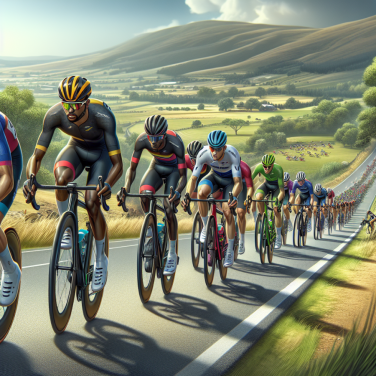Understanding the Boom of Recreational Leagues: A Tool for Community Engagement
As the trend of recreational leagues grows, it is found to be more than just a fitness regime or a competitive activity for individuals. It is gradually becoming a tool for bringing communities closer. Here, we dissect the reasons behind this boom, and how communities can leverage these leagues for enhanced engagement.
The concept of recreational leagues is not confined to engaging people with sports; it has taken a leap in terms important to the community as a whole. It presents an opportunity for everyone to come together, fostering community spirit. Often, these leagues break down barriers and contribute to knitting a closely engaged society. Participating in recreational leagues provides an arena for the community to communicate, collaborate, and connect. This feeling of belonging, which arises from active participation, enhances the overall societal bond.
One extensively noticed uptick in recreational leagues' popularity is attributed to their inclusive nature. These platforms respect diversity and promote participation across different ages, skill levels, and genders. The space is not limited to seasoned sportspeople but extends to everyone who wishes to contribute. In creating a common ground that reflects the real-world demographic, recreational leagues foster interaction among the diverse community members, thus solidifying the social fabric.
The community-building effect of these leagues is evident during community-based functions, initiatives, and fundraisers. As a case in point, leagues often support charities or community projects, making them the centrifugal force in pooling resources and efforts for societal benefits. This collective effort cultivates a greater sense of responsibility and unity.
Another factor to consider is the recreational leagues' impact on green spaces, communal areas, or local facilities that host these activities. Their use helps maintain these spaces and often brings about renovations, improvements, or increased protection. This visible impact drives community pride and a shared sense of ownership.
Furthermore, the value of recreational leagues extends to individual health benefits and overall well-being, aspects that resonate with a community's collective quality of life. Participation paves the way for improved physical health, reduced stress levels, and enhanced mental well-being. In addition to boosting individual fitness levels, these leagues promote the importance of health and wellness within a community, leading to a more conscious, healthier society.
Increasingly, recreational leagues are acting as social bridges, bringing disparate and diverse groups together. These leagues provide a platform for social interaction and friendships outside the conventional workspace, neighborhood, or social circle. It allows individuals to bond over common interests, fostering intergenerational and intercultural bridges that significantly improve overall community engagement.
Read also:
Touchdown in Crypto: Athletes Embrace Full Digital Paychecks
Positive Impacts of Increasing Participation in Recreational Leagues on Local Communities
The positive impacts of more people partaking in recreational leagues are not limited to the health benefits and enjoyment of the players involved. These leagues also offer substantial benefits for the local communities where they operate. These benefits can take multiple forms, including social, economic, and even environmental effects.
Starting with the social impact, recreational leagues create an opportunity for people from different walks of life to come together and connect over a shared love for a sport or activity. It breaks down barriers between different social and ethnic groups, working to promote equality, mutual respect, and community cohesion. Increased interaction among residents fosters strong neighborhood relationships, encourages community spirit, and improves overall community satisfaction.
Moreover, these leagues regularly foster community pride and identity, as locals enthusiastically come together to attend games and cheer on their home teams. This increased sense of community spirit not only makes the neighborhood a more welcoming place to live, but it can also reduce social problems such as crime, loneliness, and segregation.
From an economic viewpoint, increased participation in recreational leagues can stimulate the local economy. They create job opportunities, both directly and indirectly. For instance, the management of these leagues often requires paid roles such as coaches, referees, and facility managers. Indirect job creation occurs in local businesses such as restaurants, sports retailers, and transportation services, all of which experience a boost in patronage from league participants and spectators.
Participating in or even just supporting a local team can also lead to increased economic activity in the form of tourism. The hosting of games and competitions can attract visiting teams and their supporters, boosting footfall and spending in local businesses such as hotels and food establishments.
Recreational leagues also play a key role in supporting health and wellbeing initiatives within local communities. Such activities provide a convenient, low-cost avenue for people to exercise and stay fit, which can, in turn, reduce strain on local healthcare services. Furthermore, these league events often become platforms for promoting healthy lifestyles and behaviors among the local population.
The environmental benefits of community recreational leagues should not be overlooked either. The development and maintenance of sports facilities such as parks, playing fields, and courts serve to create green spaces. These spaces not only benefit the environmental health of the community in terms of improved air quality but also play a role in preserving local biodiversity. Moreover, they provide aesthetically pleasing community spaces that can be used for non-sporting activities, such as picnics and outdoor events.




